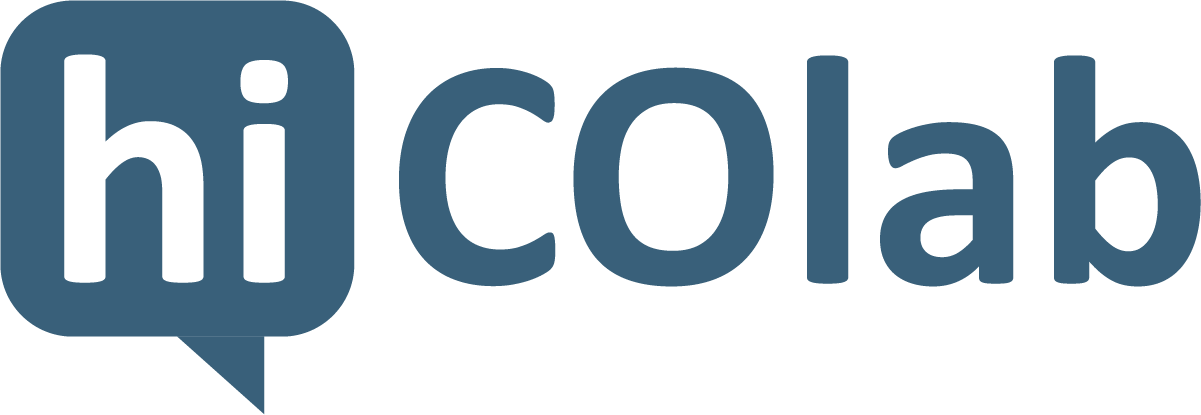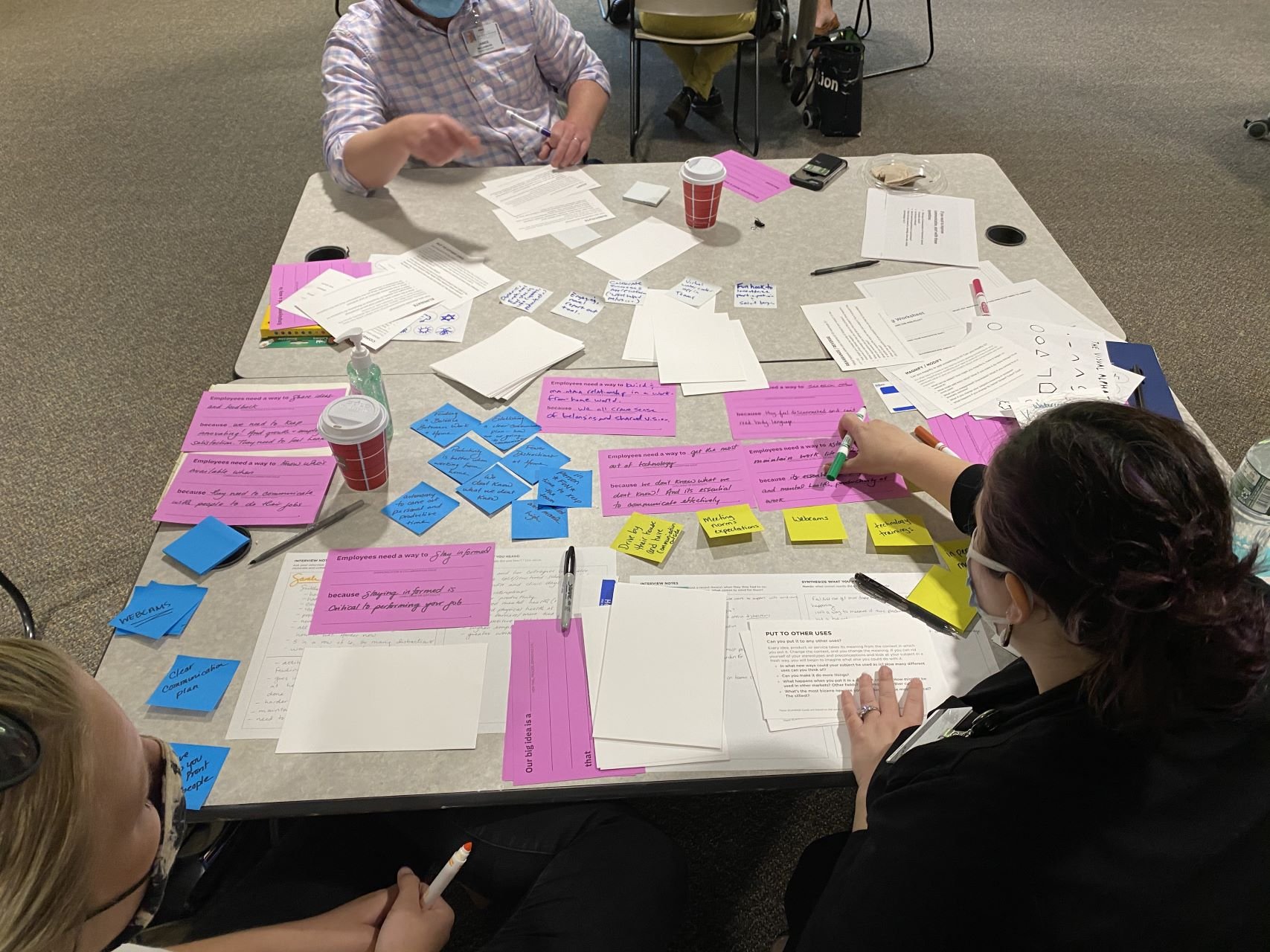Our work
Preparing our organization for the future of work
We led an organization-wide initiative to design and implement a strategy for remote work that helps our employees be successful and thrive in this workforce model over the long term.
The Challenge
Like many other organizations, the COVID-19 pandemic created many unprecedented disruptions for the UVM Medical Center and UVM Health Network, one of which was an abrupt shift to working from home for the majority of our administrative employees. Several months into this experiment, our senior leadership recognized that the ability to work remotely held many important benefits for employees whose jobs were conducive to it. It also seemed clear that national workforce trends around remote work required our organization to institute this policy in order to retain current and recruit future employees.
These realizations, though, needed to be bolstered by an intentional strategy and iterative implementation process to make work-from-home equitable and sustainable for all. hiCOlab, working with a cross-functional team, was charged with leading our organization’s effort to develop and institutionalize a remote work strategy and new workforce model for remote and hybrid work. The northstar of this initiative has been to help managers and employees be successful and thrive in this remote workforce model over the long term.
The Work
hiCOlab organized a cross-functional project team with particular expertise from Human Resources, Facilities, and Information Technology. This team was essential for critical thinking about key decisions, providing diverse perspectives, bringing feedback to the group, as well as evangelizing the project across the organization. Workgroups within each of these three domains also shared the labor of implementing the details of an organization-wide remote work plan.
“I went through the Team Purpose and Impact exercise with my team yesterday and am writing to say THANK YOU! The time and energy you all put into this framework shows and is so much appreciated. My team engaged and shared perspectives throughout the whole exercise and all found value in what we are discussing and documenting.”
Guiding Design Principles
These design principles form the rules that help guide us while making important decisions about the future of work in our organization. As a distillation of many key insights that we discovered during the research phase, they are values that remind us of what matters most to our people. Design principles have the power to unify us around what is most important because they give everyone in the organization access to a set of criteria for designing great work experiences for all. Use these design principles when creating new policies, starting new projects, strategic planning, and iterating on work practices.
1. Maximize employee choice, autonomy and control over how and when they work. Employees value the flexibility and freedom of choosing how and when they work best. When we give employees agency over their work, it sets the stage for a trusting relationship. This trust is foundational for employee satisfaction and engagement.
2. Ask employees and leaders for feedback, listen to what they say, and give them what they need to be successful. When we pay attention to the experiences of our people, reflect on and acknowledge their experiences, and then respond to their needs and remove the barriers they face, we help them be successful.
3. Help employees set and hold healthy boundaries between work and not-work. Always-on technology and the 24/7 urgency of health care can make work feel overwhelming and relentless. We should design organizational systems, tools and resources that by default insulate people from unhealthy work practices.
4. Empower employees and leaders to learn the skills they need to thrive in the remote/hybrid environment. The best remote collaboration and communication tools are useless without meaningful training for people to become fluent in them. The best workforce model will fall short without supporting people to learn the new skills and habits they need. Provide employees with the time and accessible education to grow into the new world of remote and hybrid work.
The major work streams for this future of work initiative were:
Research and design a new, bespoke remote/hybrid workforce model and categorize thousands of job descriptions based on the model.
Coordinate facilities management and planning so that any changes to physical office space would be integrated with the new workforce model.
Coordinate IT resources and infrastructure to support employee technology needs in the new workforce model.
Research, evaluate, and update policies (human resources, privacy and security, financial, etc.) to clarify expectations for and support employees working under the new model.
Finally, each of these areas of work was guided by extensive research: a literature review to learn about larger trends, case studies, and scholarship around remote work issues; and primary research (interviews, workshops, and surveys) to understand the employee experience of remote work in our organization to ensure that our strategy and implementation meets our needs.
The Impact
The new remote/hybrid workforce model soft launched at the beginning of 2022. While many remote eligible employees have already been working from home for months, the implementation of the new model and its supporting resources means that employees now have more certainty around their immediate and long-term work situations. Because of the long-term nature of this large organizational transformation, some impacts will necessarily be measured and realized over the next several months and years.
However, in the short term, we have already seen the following impacts of this initiative for our employees:
The new remote/hybrid workforce model has been adopted and institutionalized, with nearly X number (?) employees now having clarity about their remote work arrangements for the foreseeable future.
Several organizational policies have been revised or created, which gives managers and employees clarity about the expectations and boundaries for many issues around remote/hybrid work.
We created a new employee home office furniture benefit, which provide eligible remote/hybrid employees with an ergonomically correct work desk and chair for their home office.
IT developed new technology packages for remote/hybrid workers and have begun distributing these to employees.
hiCOlab designed two workbooks with a suite of remote communication and collaboration exercises (and an accompanying train-the-trainer workshop) that are helping teams create new norms around team purpose and impact, remote communication, work structure and schedule, and team cohesion and engagement.
We created extensive documentation with process templates and tools that our counterparts in other UVMHN partner organizations will use to transition to a remote/hybrid workforce model.
5. Set clear, explicit guardrails and expectations about how to communicate and collaborate in the remote/hybrid work environment. We weren’t great at communication and collaboration before the shift to remote work, and old habits haven’t served us well. We must clarify our expectations for working together by creating new norms, agreements and structures that hold us all accountable.
6. Use in-person, on-site collaboration for work that shapes our future: relationship building, solving complex problems, creative thinking, and strategic planning. We cherish being together and rely on tacit, non-verbal communication for some of our most complex interactions. We relish opportunities to be in person together to deepen our connections to each other. We need to intentionally support and plan on-site gatherings that take advantage of what sharing physical space serves best and minimize the activities that aren’t improved by in-person collaboration.
7. Create equity among all employees regardless of hybrid/remote status. Employees need different resources and opportunities depending on a range of individual and cultural factors, including their remote/hybrid status. All aspects of the experience of our organization must be evaluated and (re)designed for equity and justice.
8. Focus on an evaluation of productivity that is driven by outcomes and results, not inputs, time or volume of activity. Outdated surveillance approaches to productivity and performance evaluation undermine employee engagement and their trust in the organization. A value-based approach to understanding our productivity emphasizes the meaningful contributions of our employees and the impact they have in achieving our organizational goals.




